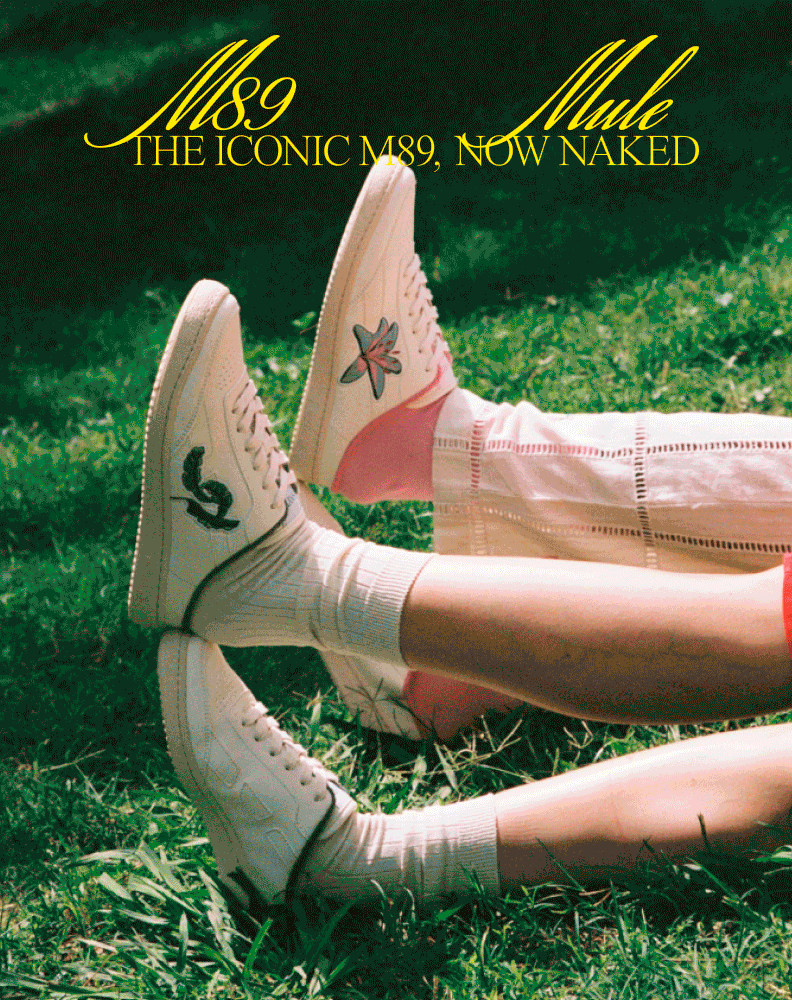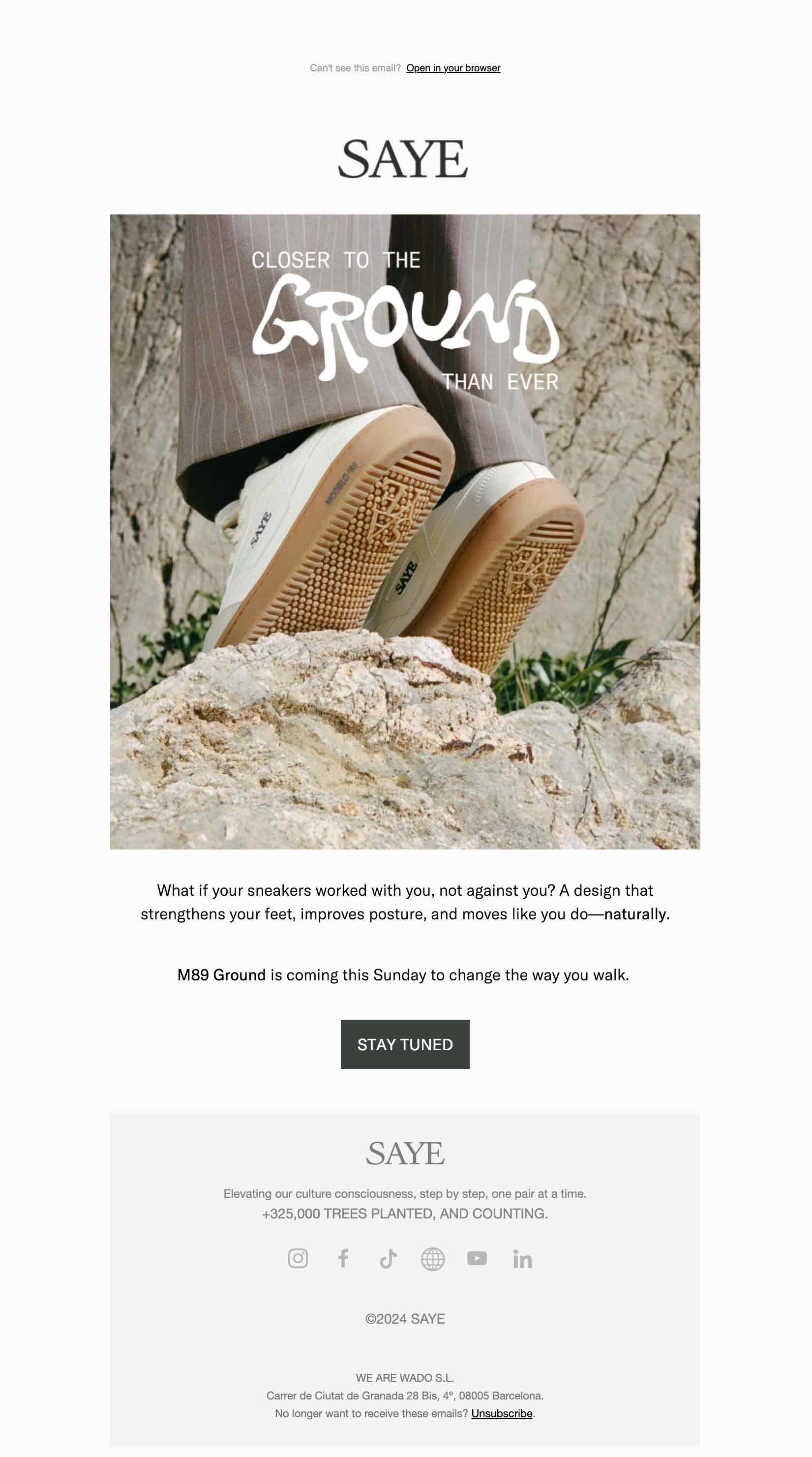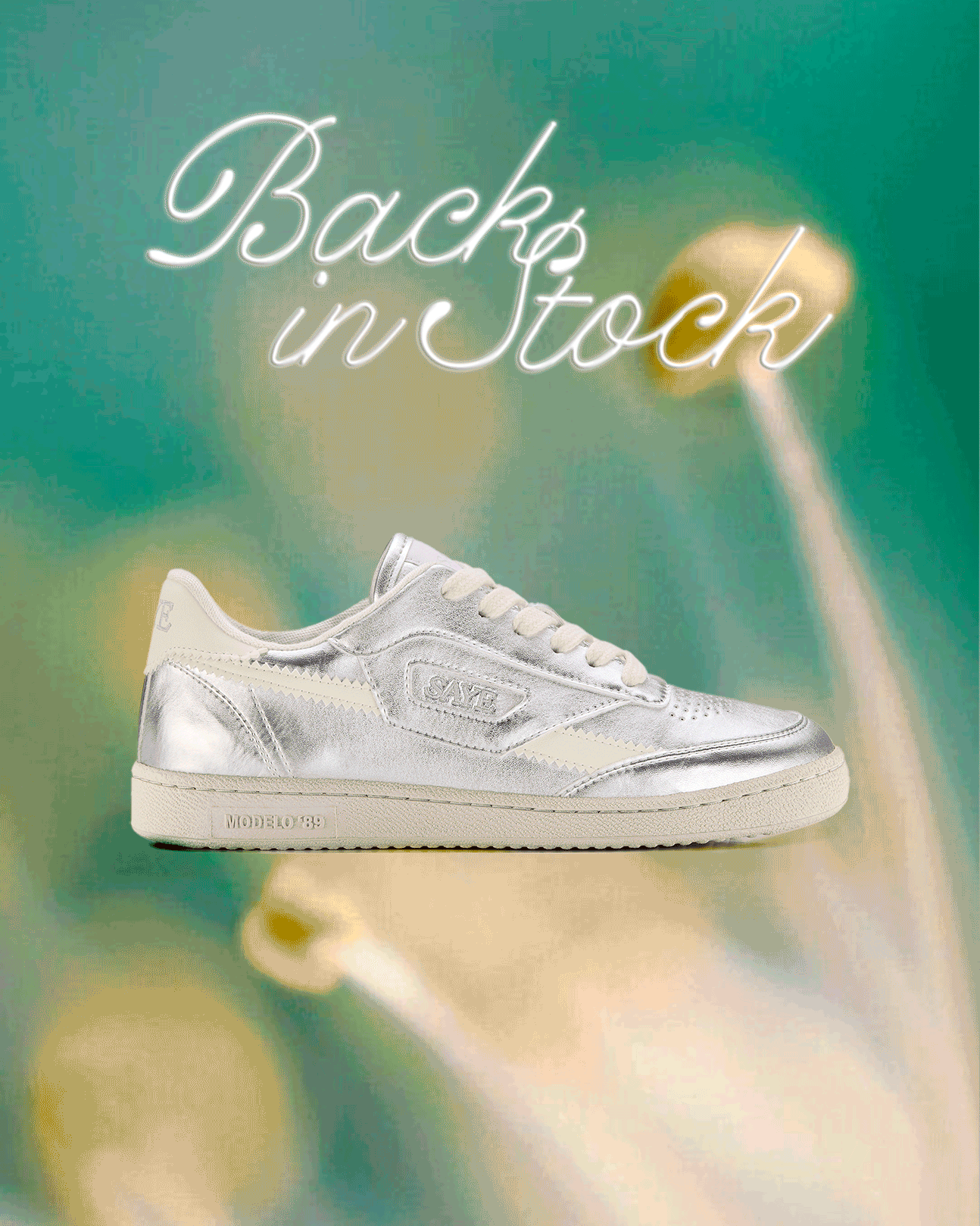Saye SNEAKERS
Spanish company SAYE is part social enterprise part sneaker brand co-founded in 2018 by Marta, Lizzie and Damian. The trio had a vision of creating a brand of eco-friendly, ethically made trainers whose sales would contribute to tree planting projects. I was tasked with launching effective digital campaigns with a focus on paid ads for search and social media, as well as targeted email campaigns. By analyzing audience insights and market trends, we crafted tailored messages that resonate with potential customers.
For search ads, we identified high-performing keywords relevant to the product offerings, ensuring maximum visibility in search engine results. Our approach included A/B testing different ad copies and creative visuals to optimize click-through rates and conversion rates.
On social media, we developed engaging ad content that highlighted the unique selling points of the products. We utilized various formats, including carousel ads, video content, and story ads, to capture audience attention across platforms.
For the email campaigns, we designed personalized email sequences that nurtured leads, provided value through informative content, and included strong calls to action. Our segmentation strategy targeted specific demographics, increasing engagement and driving sales.
The combined efforts of these campaigns resulted in a significant boost in sales, demonstrating the power of a cohesive digital marketing strategy.
Client: SAYE
Focus: Creative direction, Art direction, Digital Design, Paid ads, 360 Ad Campaign
Digital AD CAMPAIGN
Redesigning a product page to adopt a more editorial style can significantly enhance user engagement. This approach allows for a deeper narrative surrounding the product, moving beyond basic descriptions and specifications. Here are key strategies to consider:
1. Storytelling Elements
Incorporate storytelling elements that connect the product with the consumer's lifestyle or values. Utilize engaging headlines and subheadings that capture attention and draw readers in. Sharing the origins of the product, its creation process, or a personal story can create an emotional connection.
2. Visual Content
Use high-quality images, videos, and illustrations that not only show the product but also demonstrate its application in real-life scenarios. Consider including behind-the-scenes content or user-generated content that reflects authentic experiences. The visual components should complement the narrative and encourage users to imagine themselves using the product.
The editorial design approach improved user engagement and reduced bounce rates by creating a cohesive visual narrative aligned with the brand's identity and enhancing user experience.
Key elements included the use of impactful typography, strategic use of imagery, and well-structured layouts. By curating content that emphasized readability and aesthetic appeal, we captured the audience's attention more effectively. Additionally, we incorporated interactive elements, such as embedded videos and graphics, to foster a more engaging experience.
The restructured content flow guided users seamlessly through articles. This encouraged them to explore related topics rather than exit the site prematurely. By providing value through well-organized information and visually appealing presentations, we not only kept visitors on the page longer but also motivated them to engage with multiple pieces of content.
The combination of editorial design principles with a focus on user-centricity created an inviting environment that resonated with our audience. As a result, we saw a measurable decrease in bounce rates, indicating a higher level of user satisfaction and engagement.
Email Campaigns
Email Campaigns
Designing assets for email campaigns involves a strategic approach to ensure effective communication with both new and existing customers. Each segment requires a tailored design that aligns with their specific needs, behaviors, and expectations.
For new customers, the email design should focus on brand introduction and engagement. Key assets include:
Welcome Headers: Use captivating visuals that incorporate your brand colors and logo to create an inviting first impression.
Clear Call-to-Action Buttons: Ensure CTAs are visually distinct and encourage new subscribers to explore your offerings or engage further.
Educational Content: Include infographics or illustrated guides that introduce your products or services, making it easier for them to understand their value.
For existing customers, the design strategy shifts toward relationship nurturing and retention. Key assets may include:
Personalized Content: Utilize customer data to tailor the messaging and visuals, ensuring relevance. This could involve showcasing products based on past purchases or preferences.
Dynamic Elements: Incorporate animated visuals or GIFs to create a more engaging experience, encouraging clicks.
Promotional Banners: Clearly highlight any ongoing promotions or loyalty rewards through eye-catching designs that stand out in the email layout.
In both cases, maintaining brand consistency across all email assets is crucial. This includes font choices, color schemes, and overall tone of the visuals, which help reinforce brand identity. Additionally, optimizing for mobile viewing is essential, as a significant portion of users accesses emails on their devices.
A/B testing different designs can further refine the approach, allowing for continuous improvement based on customer interaction. Overall, effective email campaign assets bridge the gap between your brand and customers, fostering deeper connections and driving engagement.












